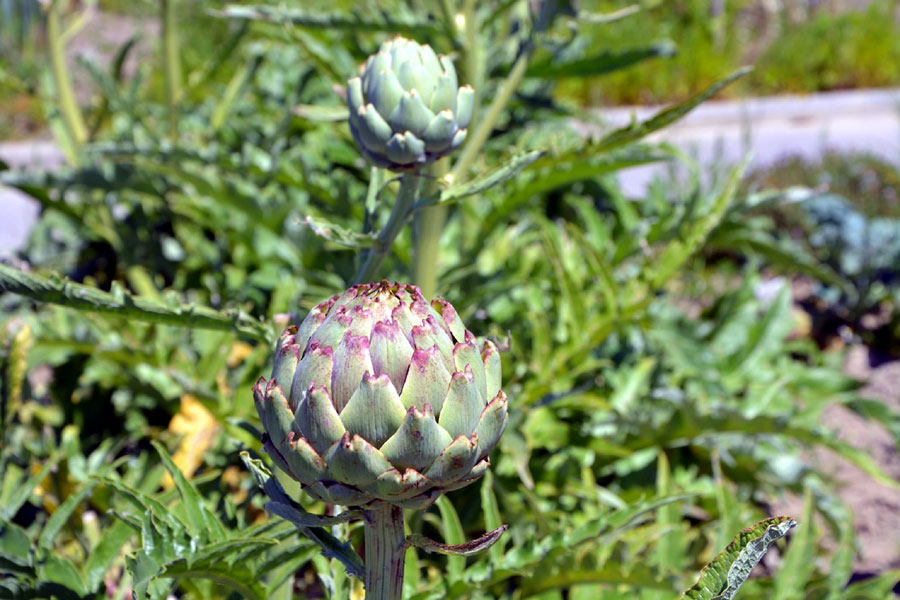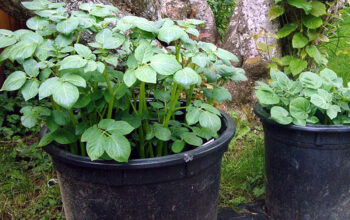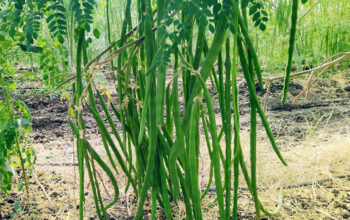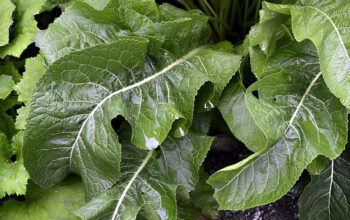Artichoke Plant (Cynara cardunculus)
Globe artichoke (cynara cardunculus), also called
French artichokes or
green artichokes in the U.S., are varieties of thistles that are cultivated for food. Flower buds before the flowers bloom make up the edible part of a plant. The budding artichoke flower-head is a cluster of many budding small flowers, together with many bracts, on an edible base. Once the buds bloom, the structure changes to a course, barely edible form.
Growing to a height of 1.4–2 m, it has silvery, glaucous-green leaves that measure 50–83 cm in length and have deep lobed edges. A large head of flowers opens from a bud with a diameter of around 8–15 cm and is covered in numerous triangular scales. Individual florets are purple.

Overview Artichoke Plant
Scientific Name Cynara cardunculus
Common Name Artichoke Plant, globe artichoke, French artichoke,
Plant Type Vegetable
Sun Requirements Full sun
Soil Well-drained fertile soil
Soil pH 6.5 to 7.0
Blooming time Fall, Summer
Zone 7-11
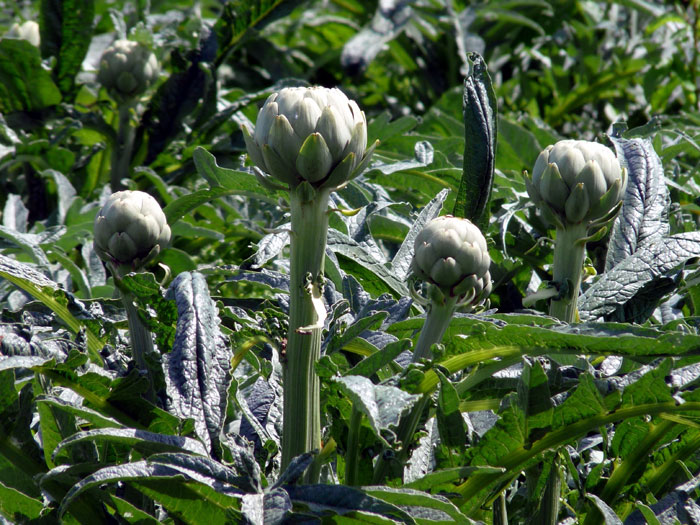
How to Grow and Care Artichoke Plant
Depending on the climate, different times of the year are appropriate to plant artichokes. Artichokes must be planted in the spring where they’re grown as an annual. When they are grown as
perennials in warmer climates, they are often sown as seeds in autumn or as young plants in mid-autumn. The plants usually take 85 to 100 days to reach maturity. It is also possible to root artichoke cuttings, which are used in areas where the plants can be grown as perennials.
Growing from seeds
During February, artichoke
seeds can be planted in 4-inch containers about 1/4-inch deep under a greenhouse or fluorescent light. Ensure that the containers are deep. Your artichokes may not grow true from seed saved from them, so the plants you grow from them will be very different from the ones you started with. It is best to use seed that has been grown under controlled conditions.
Sunlight
Planting them too closely together will cause the large plants to shade the smaller ones. Artichoke plants need full sun, so it is best not to plant them too close together. Although they can tolerate some shade, their flower buds may suffer. Artichoke transplants should be spaced at a four-to-six-foot interval.
Soil
It is possible to grow artichokes in most soils, but you will get a better yield from deeply worked, organic soils full of nutrients. They require a slightly alkaline pH.
Sandy soil, such as Mediterranean soil, is ideal. Root rot can be prevented by good drainage in areas where they will overwinter. It is however important that the soil can maintain its ability to retain water long enough to allow the roots to absorb it during the summer months.
When growing perennial artichokes, amending the soil before planting is especially important to ensure that the plants will thrive. Raised beds are a good option if your garden soil is poor.
Watering
Water the artichoke plants frequently. To encourage drainage, artichokes should be planted in irrigation furrows or atop mounds to prevent soggy soil. During the growing season, water artichokes 1 to 2 inches a week, spreading out the application over several weeks.
Temperature
Ideally, this plant grows in warm, dry weather like that found in the Mediterranean region as well as California. The plant will bloom prematurely if there is too much heat. During the growing season, artichoke plants prefer mild winters between 50 and 60 degrees Fahrenheit and cool, moist summers between 70 and 80 degrees Fahrenheit.
Fertilizer
Fertilizing your artichoke bed properly will ensure the plants receive all the nutrients they need to thrive. You can feed your plants with a high-nitrogen fertilizer in the fall in areas where plants can grow all year round. Spring is the best time to apply fertilizer in cold areas. Apply a side-dressing of fertilizer. When a new crown is beginning to grow, fertilize the plant with approximately 1/10 pound of nitrogen.
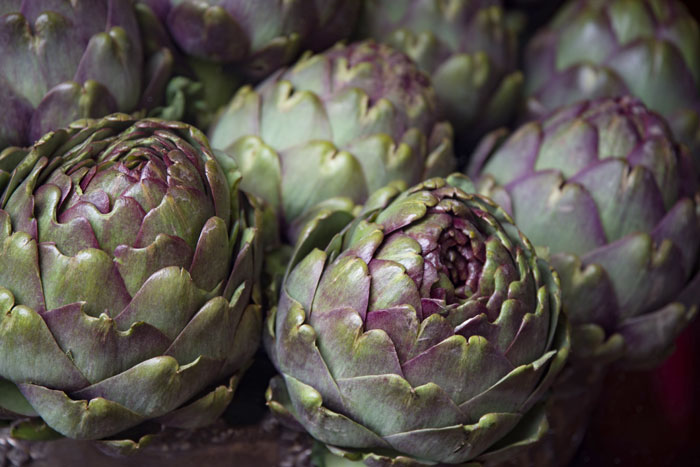
Pruning
After the artichoke’s buds have been harvested at the end of the summer, you need to cut them back completely. It can be done right up until the beginning of autumn. Each spent stalk should be completely cut off with pruning shears. In order to keep your artichoke plants protected from cold temperatures, mulch your bed with straw or leaves. The plants may be damaged if the temperatures drop below 15 degrees. Once the last frost date for your growing zone has passed, remove the mulch in the spring.
Read also:
Buttercup winter hazel plant growing and care tips. How to grow
gomphrena plant in garden. 8 ways to
bring nature into your city homes. 07 most popular
kalanchoe species for your garden. When and how to grow
wisteria plants. How to grow
Organic Cucumbers. Growing
Bromeliad plant (earth star) in containers. 9 Best
edible flowers you can eat. Growing
Brussels sprouts at home.
Calibrachoa (million bells) growing and caring.
For pin:





